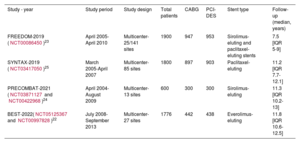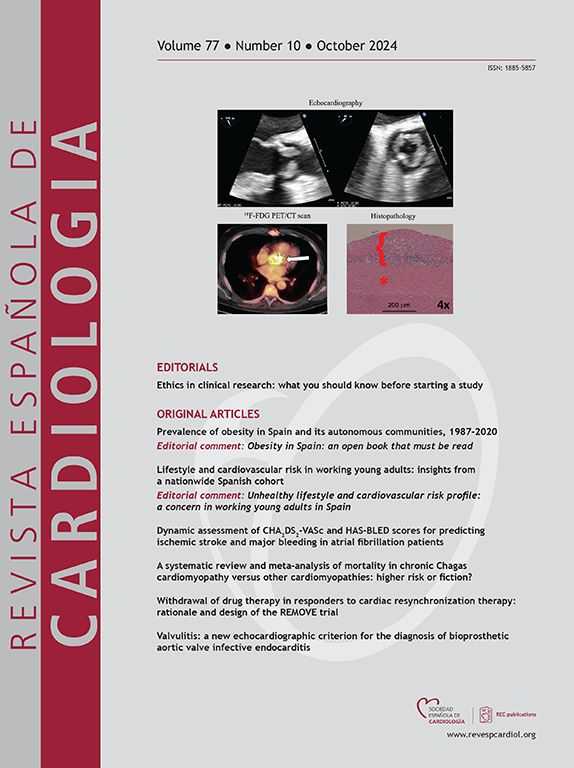
There is controversy about the optimal revascularization strategy in severe coronary artery disease (CAD), including left main disease and/or multivessel disease. Several meta-analyses have analyzed the results at 5-year follow-up but there are no results after the fifth year. We conducted a systematic review and meta-analysis of randomized clinical trials, comparing results after the fifth year, between coronary artery bypass grafting (CABG) and percutaneous coronary intervention (PCI) using drug-eluting stents in patients with severe CAD.
MethodsWe analyzed all clinical trials between January 2010 and January 2023. The primary endpoint was all-cause mortality. The databases of the original articles were reconstructed from Kaplan-Meier curves, simulating an individual-level meta-analysis. Comparisons were made at certain cutoff points (5 and 10 years). The 10-year restricted median survival time difference between CABG and PCI was calculated. The random effects model and the DerSimonian-Laird method were applied.
ResultsThe meta-analysis included 5180 patients. During the 10-year follow-up, PCI showed a higher overall incidence of all-cause mortality (HR, 1.19; 95%CI, 1.04-1.32; P=.008)]. PCI showed an increased risk of all-cause mortality within 5 years (HR, 1.2; 95%CI, 1.06-1.53; P=.008), while no differences in the 5–10-year period were revealed (HR, 1.03; 95%CI, 0.84-1.26; P=.76). Life expectancy of CABG patients was slightly higher than that of PCI patients (2.4 months more).
ConclusionsIn patients with severe CAD, including left main disease and/or multivessel disease, there was higher a incidence of all-cause mortality after PCI compared with CABG at 10 years of follow-up. Specifically, PCI has higher mortality during the first 5 years and comparable risk beyond 5 years.
Keywords
Identify yourself
Not yet a subscriber to the journal?
Purchase access to the article
By purchasing the article, the PDF of the same can be downloaded
Price: 19,34 €
Phone for incidents
Monday to Friday from 9am to 6pm (GMT+1) except for the months of July and August, which will be from 9am to 3pm






